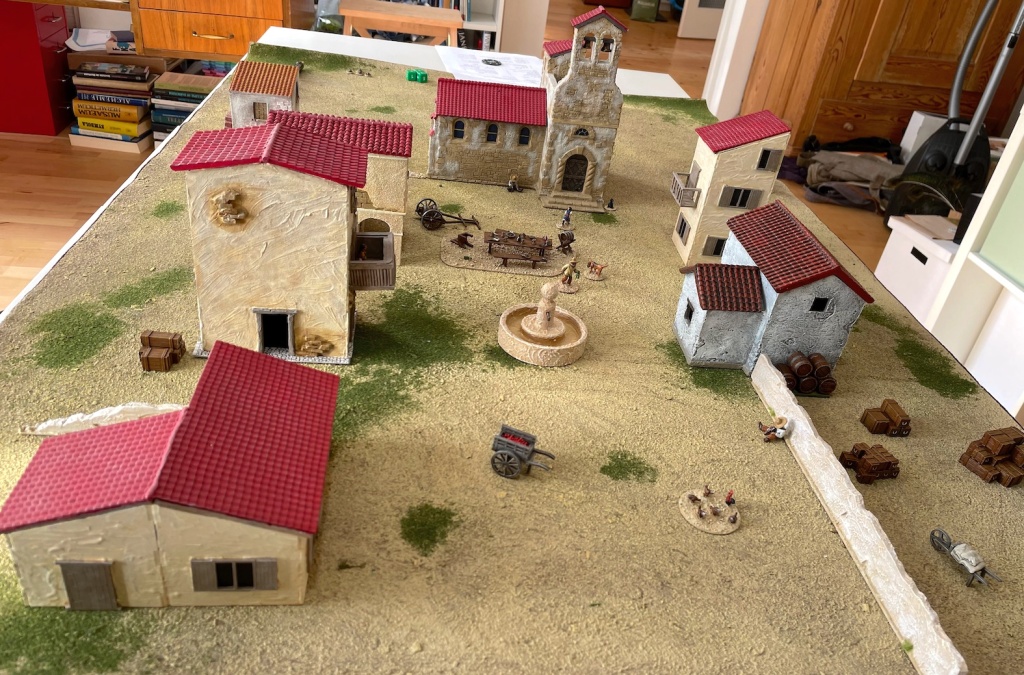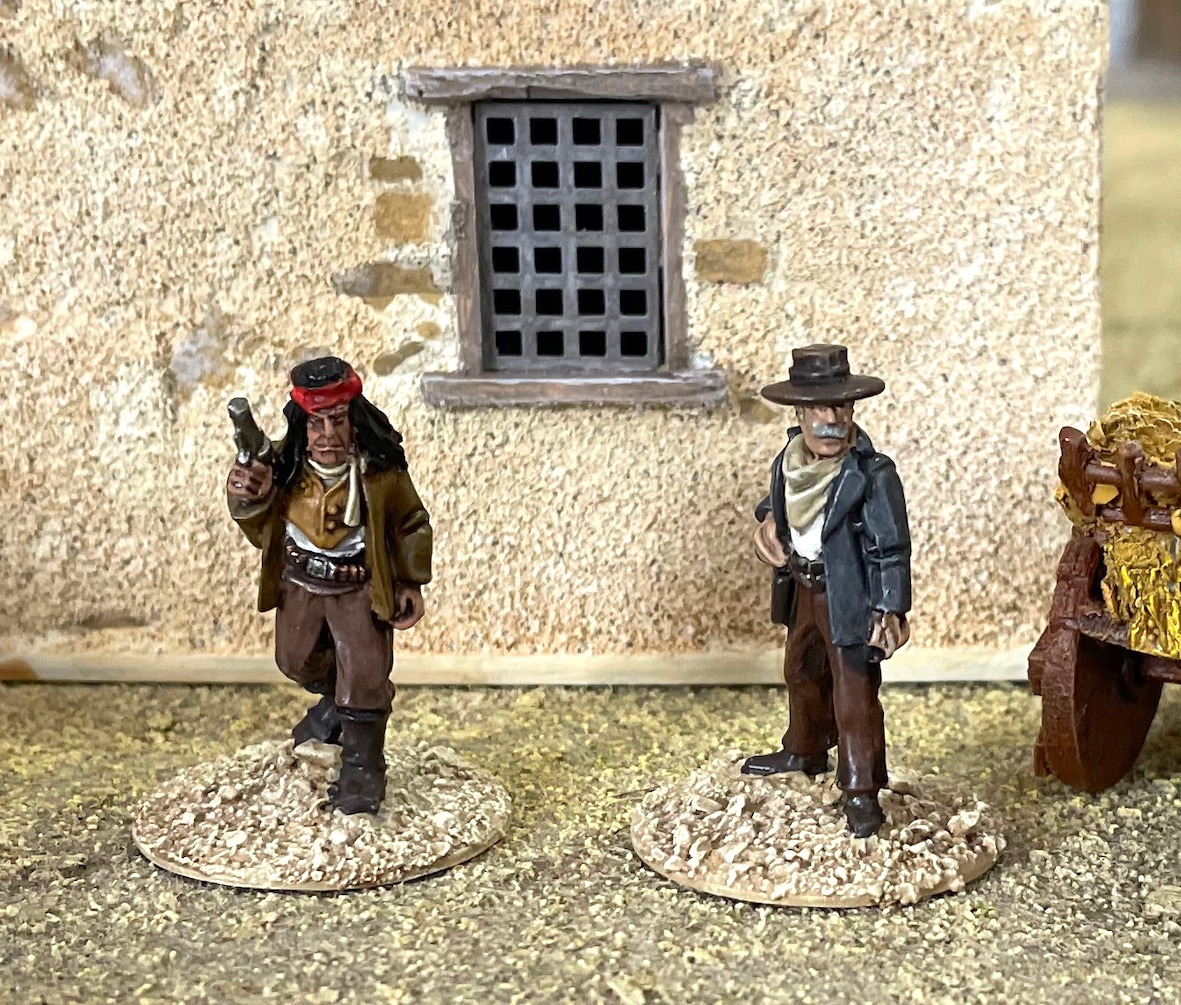Well, another two months have gone by without blogging. To my excuse, they have been busy months, as I had to stay in hospital for a (planned) operation and then needed some time to recover. But thankfully, everything went well and I’m slowly getting back to gaming activities.
I still managed to get some games in. I started a remote What a Cowboy! campaign with Stephan, who lives in Sweden, and Martin. My gang met Stephan and Martin’s gang at a surveyor’s camp and, after a hard fight, finally skedaddled. A bit of an inglorious start, but it was great fun and I’m looking forward to the next game!

Sigur and me also introduced a friend to Sharp Practice. We played a fictitious napoleonic scenario where both sides had to occupy and hold a hill. Again I lost, but fun was had by all and James was pretty taken by Sharp Practice, so mission accomplished.

I also decided to finally get to work on my American Civil War naval rules. I had tinkered with them last year and played a number of test games, which, in the end, resulted in a pretty solid game. I really want to publish them this year, but there is still work to be done.
To try out a couple of different scenarios, I built and painted more ships. As I needed cottonclads and couldn’t find models to represent them in 1/600, I designed some myself.

The larger one depicts CSS Bayou City, which saw action at Galveston Bay, the smaller is a more generic model which can be used for crafts such as CSS Neptune or CSS Uncle Ben. The stl files are available at https://www.wargaming3d.com/product/confederate-cottonclads-1-600-acw-ships/.
Finally, I was very happy to start the summer gaming season with an outdoor game with Virago and Sigur. We hadn’t seen each other for a while, and it was great to catch up, talk and play something. Virago brought Fire & Stone: Siege of Vienna 1683 and let Sigur and me fight it out. I took the Ottomans and abysmally failed at besieging Vienna. However, I really like the game: not only are the components beautiful, the gameplay itself is quite interesting. Sieges are notoriously difficult to depict in games, but Fire & Stone does a great job. I hope to play it again – maybe I will manage to proceed beyond the glacis…

Now I’m busy preparing the last bits for our big summer gaming event, which will take place next week. We’ll play a multi-player game of What a Cowboy! and I still have to finish the mine…













